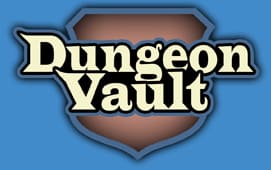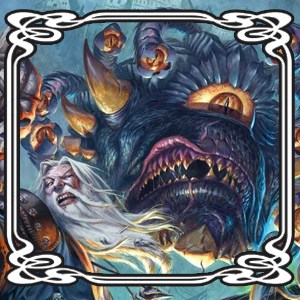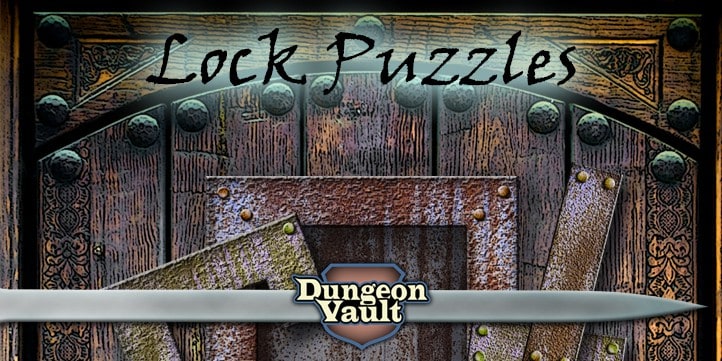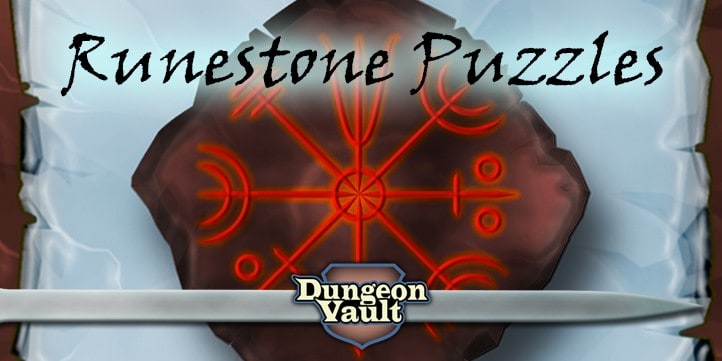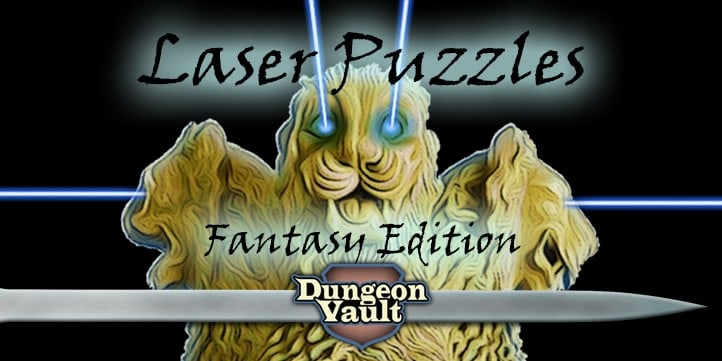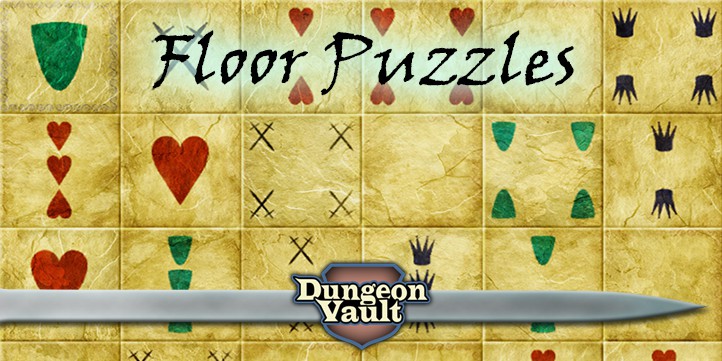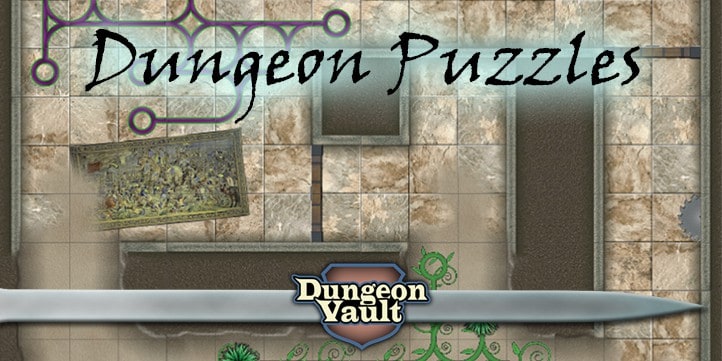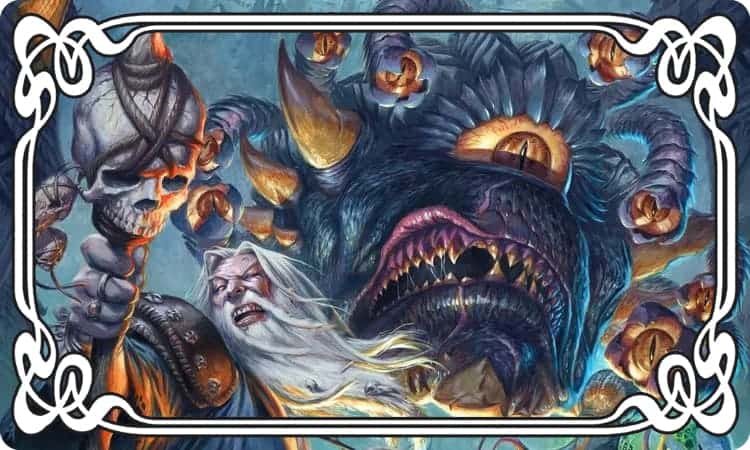
You want to give your players a difficult D&D puzzle challenge. The kind of puzzle any party would have a hard time solving. Because the harder your puzzle, the greater the reward when they finally do manage to solve it. But designing a difficult D&D puzzle is a lot harder than it looks. Because no matter how smart your players are, you don’t want them to get stuck on your hard puzzle or worse, give up halfway through.
So how do you design a D&D puzzle that is both super difficult, but also solvable and enjoyable? There’s a couple of tricks I use for difficult puzzles. In this article, I’ll explain how to set up hard puzzles for your D&D players.
If you simply want challenging D&D puzzles without the design tips, scroll to the second half of this article.
Creating Difficult D&D Puzzles For Brainy Players
Let’s start with getting the first big misunderstanding about difficult puzzles out of the way. Not all difficult puzzles are alike. In fact, there are two types of difficult D&D puzzles:
- Puzzles that are difficult because of their complexity.
- Puzzles that are difficult because of how much work they take to solve.
When we want to present our players with a difficult puzzle we often choose a complex puzzle that is hard to solve. But that is very risky. Because if you choose a puzzle that is too complex your players might not be able to solve the puzzle at all. And there’s no point in presenting players with a difficult puzzle if they get discouraged.
Instead of using the most complex D&D puzzle you can find, try to present players with a puzzle that matches and challenges their capability.
So if you’re playing D&D with kids puzzles should be difficult for them. And if you’re playing with the mathematics department at MIT use puzzles that match their level of capability.
Creating Difficult Puzzles That Match a Player’s Capability
It can be difficult to find out just how capable your players are. That’s why in many of my puzzle packs start with easy puzzles that become increasingly more difficult. This way you can hit the puzzle sweet spot for your party, which is ‘hard but not impossible’.
Of course, not all players have the same level of capability and you can incorporate different challenges that are just difficult enough for each player. For instance, a player who hates puzzles and isn’t very good at them could be tasked with climbing the bookcases of a library to gather all the clues to the puzzle, while the players who enjoy a difficult puzzle challenge do the hard work. This way, even though the player didn’t actually solve the puzzle, their actions were crucial to solving it.
Another thing to consider is the types of puzzles players enjoy. Players who have lower intelligence generally enjoy linear puzzles and players with high intelligence often find non-linear puzzles more enjoyable. Here are some tips on layering door puzzles that also illustrate how to set up a non-linear design.
And then there’s the intelligence of the PC versus that of the player. For instance, if the player is playing a wizard with super high intelligence then it’s possible that the character would be able to solve your difficult D&D puzzle, but the player can’t. I just let PCs make intelligence checks to see if they can get a hint whenever players feel stuck. This way you’re not just challenging the players and their intelligence, but also that of their characters.
And remember, sometimes players play a super-intelligent character because they want to have that experience of being able to solve a difficult puzzle. So don’t deny them the experience by only challenging the player.
Difficult Complex D&D Puzzle Suggestions
You can create challenging D&D puzzles yourself. But if you are looking for my most complex puzzles for your D&D game, my Lock Puzzles and Runestone Puzzles are the most difficult.
With both puzzles, you can infinitely increase the difficulty by adding more puzzle pieces. Here’s how it works:
With Lock Puzzles, players get a number of basic puzzles that each hold 3 puzzle pieces. But the players won’t know which 3 pieces go with each puzzle. As you add more puzzles to the mix, they become increasingly difficult to solve.
The basic pack suggests you don’t use more than 9 puzzles which would take an average group about half an hour to solve. But you can add more puzzles if you wish to create an even harder challenge.
With Runestone Puzzles, you only get nine puzzle pieces. But laying out those 9 pieces in a 3 by 3 square takes an average group about twenty minutes to half an hour. You can increase the difficulty by adding more puzzle pieces to the mix.
Be warned that adding too many puzzle pieces will make these impossible to solve. You can reduce the difficulty during play by allowing intelligence checks for hints.
Creating Difficult D&D Puzzles That Take Much Work To Solve
There are two types of difficult puzzles: Ones that are complex which we’ve discussed and ones that take a lot of work to solve.
The beauty of puzzles that involve a lot of steps to solve is that players will feel like they have solved a very difficult puzzle even though each step really wasn’t that hard at all. So even if your players aren’t highly intelligent – and most of us aren’t – solving these types of puzzles will make them feel like they’ve accomplished a difficult feat.
It’s a bit like finishing a jigsaw puzzle with a thousand pieces. It sounds difficult but it’s really just a lot of trial and error. What’s more, puzzles that are a lot of work to solve contain a lot of steps. And with each step players solve they experience success. So solving a difficult puzzle that has a lot of steps to it offers players a continuous feeling of success and progression.
This continuous feeling of success and progression is called ‘flow’ and it is why puzzles are so addictive to many. In fact, the most popular puzzles in the world all have many small steps to solving them to create this flow.
Of course, I design all of my puzzles to have flow as well. But the ones that really stand out in this department are Laser Puzzles, Floor puzzles, and Dungeon Puzzles.
With Laser Puzzles, players start off small but the final puzzle in this pack is massive. Players have to connect a ton of statues in a very particular way. While each step of this puzzle isn’t that difficult, solving the entire puzzle will take a lot of work.
Floor Puzzles sometimes gets overlooked in my shop which is a shame because it is one of my best puzzles from a design standpoint. The final puzzles in this pack are also enormous and take a party about thirty to forty minutes to solve each. Again, the steps aren’t that difficult but there’s a lot of work involved.
Dungeon Puzzles gets the highest ratings from buyers. Just like with the complex difficult puzzles, you can keep adding more pieces to it. But with this puzzle, the solution doesn’t become more difficult to solve, just more work.
Creating a Difficult D&D Puzzle Challenge From Many Small Ones
When creating a difficult puzzle the obvious thing to do is make it bigger. But really big puzzles can become repetitive to players. A great alternative is to link different puzzles together. You can do this by presenting one puzzle and have the solution to that puzzle yield a key piece or clue needed to solve the next one.
For instance, if players solve a lock puzzle the door opens and they find a floor puzzle. Solve that and a tile pops up revealing the last missing piece to a runestone puzzle they found earlier.
By linking regular puzzles together you can create a very difficult puzzle that can last several D&D sessions.

By Paul Camp
Image credit: Wizards of the Coast
